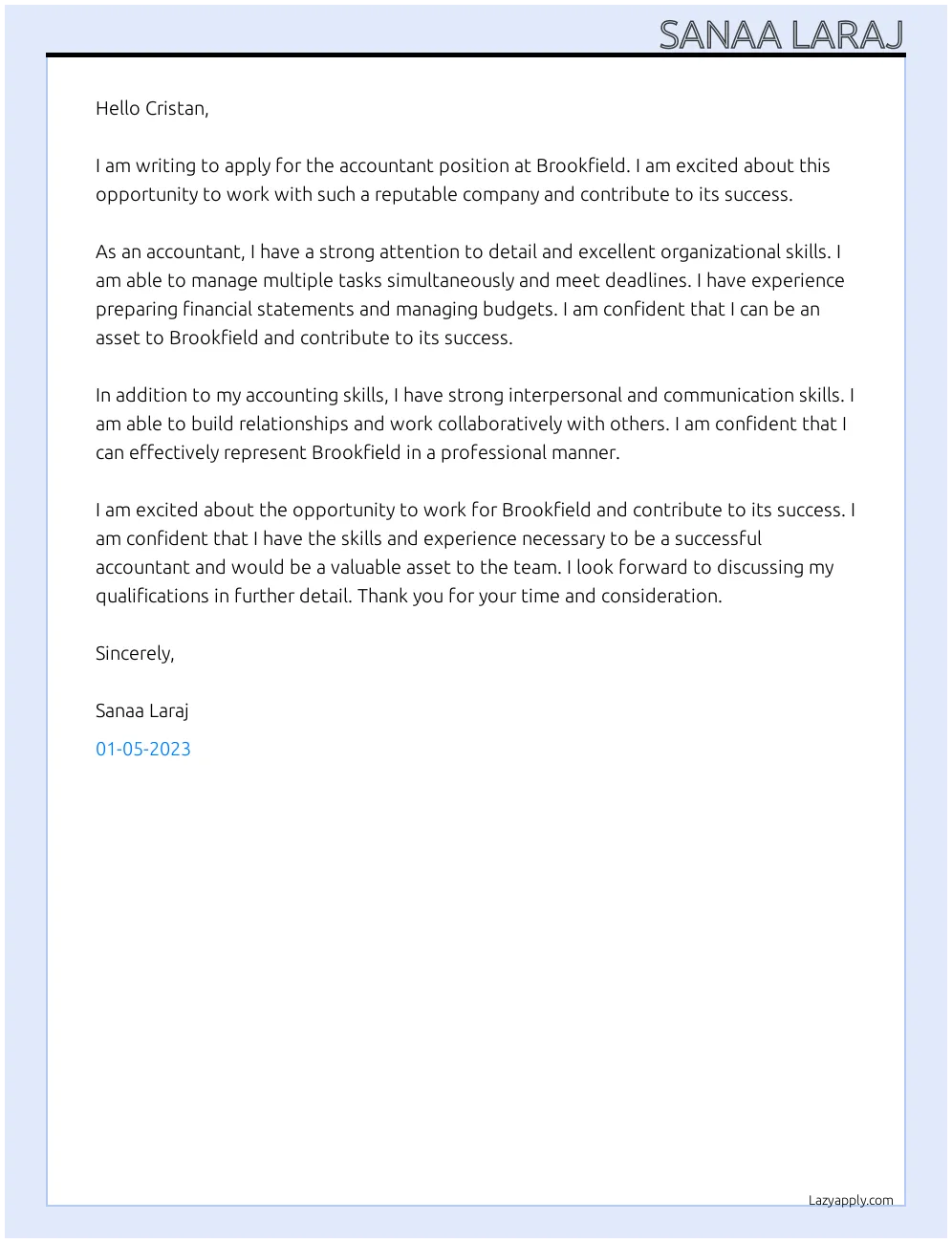What is an Accountant Cover Letter
An accountant cover letter is a crucial document that accompanies your resume when applying for accounting positions. It serves as your introduction to a potential employer, providing a concise overview of your qualifications, skills, and experience. Unlike a resume, which lists your achievements, a cover letter allows you to elaborate on them, demonstrating how you align with the specific requirements of the job and the company’s values. A well-written cover letter can significantly increase your chances of landing an interview. It showcases your personality and communication skills, making you stand out from other applicants. A compelling cover letter helps the hiring manager understand why you are the best fit for the position, emphasizing your motivation and interest in the role.
Why You Need an Accountant Cover Letter
In today’s competitive job market, a cover letter is essential for accountants seeking employment. It offers an opportunity to go beyond the basic information presented in your resume, allowing you to tell your story and highlight the skills and experiences most relevant to the specific job. The cover letter shows your genuine interest in the position and the company. It demonstrates your research efforts and your understanding of the company’s mission and values. It can also help you bridge gaps in your resume or address any concerns a hiring manager might have. Without a cover letter, your application might seem impersonal or incomplete, which can lead to your application being overlooked. A cover letter is your chance to make a strong first impression and create a positive impression.
Key Components of an Accountant Cover Letter
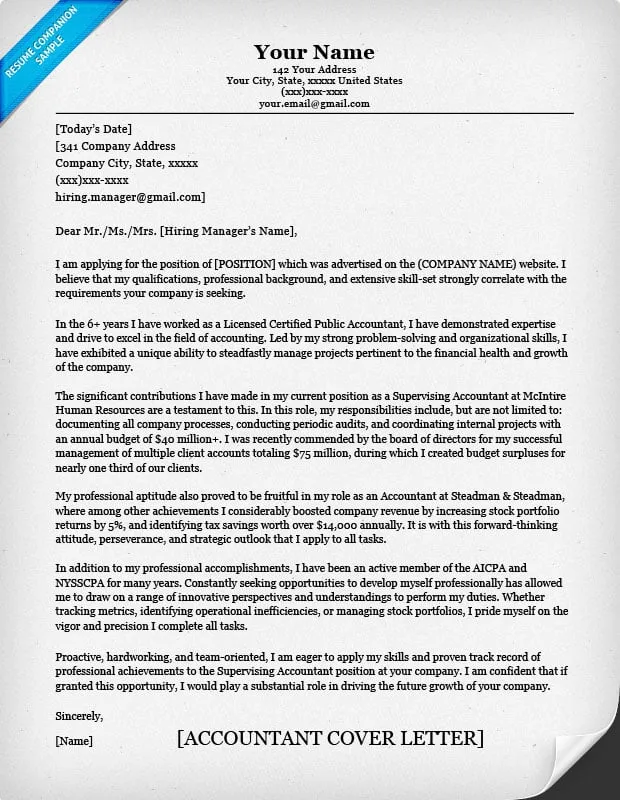
A well-structured cover letter is easy to read and conveys your qualifications effectively. Start with the basics, including contact information, date, and recipient information. A clear and professional format immediately grabs the reader’s attention and sets the stage for the rest of your letter. From the opening paragraph to the closing, each section must be strategically crafted to make you the best possible candidate. Highlighting your skills and experience is key and tailoring your letter to the specific job requirements and company is crucial. Be sure to end with a call to action, inviting the employer to review your resume and schedule an interview. A polished cover letter enhances your chances of being considered for the accounting position.
Contact Information
At the top of your cover letter, provide your contact information, including your full name, phone number, email address, and optionally, your LinkedIn profile URL. Ensure that the contact information is accurate and up-to-date. This allows the employer to easily reach you for an interview or further communication. Make sure to use a professional email address, and avoid using nicknames or informal language. Double-check that your phone number is correct and that your voicemail is set up professionally. This is a key step in making a positive first impression and ensuring that you are easy to reach.
Date
Below your contact information, include the date you are submitting the cover letter. This helps the employer understand when the application was submitted. Use a standard date format (e.g., Month Day, Year). This simple detail adds a sense of professionalism and organization to your letter. The date ensures that all elements of your application are up to date. Ensure your date is accurate and matches the current submission date. The date provides context and shows that you are attentive to detail.
Recipient’s Information
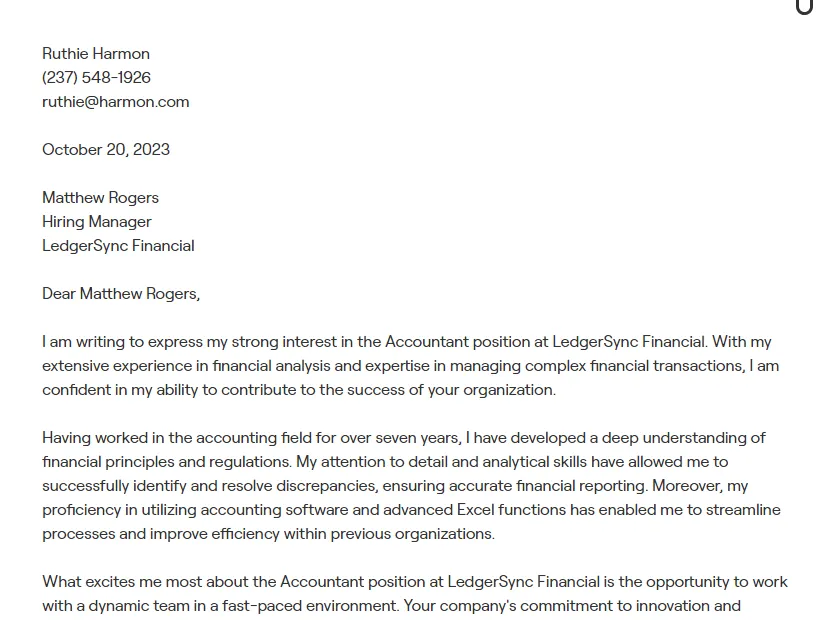
Always address your cover letter to a specific person, if possible. Research the name of the hiring manager or the person responsible for reviewing applications. If you cannot find a specific name, use a professional greeting such as “Dear Hiring Manager.” Avoid generic greetings such as “To Whom It May Concern.” Addressing the letter to a specific person shows that you have done your research and are genuinely interested in the position. This personal touch can make your cover letter stand out and is a great detail. Use the person’s title and full name for a more formal tone.
Greeting
Start your cover letter with a professional greeting. The standard greetings are “Dear Mr./Ms./Mx. [Last Name],” or “Dear [Hiring Manager].” Always use a formal and professional greeting. Avoid casual or informal greetings. A proper greeting sets the tone for your letter and conveys respect for the recipient. Use the correct title (Mr., Ms., or Mx.) and double-check the spelling of the name. By using a professional greeting, you signal your attention to detail and respect for the company.
Crafting the Perfect Opening Paragraph
Your opening paragraph should immediately grab the reader’s attention. Clearly state the position you are applying for and how you found the job posting. Briefly mention your most relevant qualifications and express your enthusiasm for the role and the company. This paragraph is your elevator pitch, a brief overview of what makes you a strong candidate. You want to show why you are interested and why you are a good fit. Make sure it is tailored to the specific job requirements. Show your excitement and the reasons you are the best fit. Be clear and concise, and do not waste the reader’s time.
Highlighting Your Skills and Experience
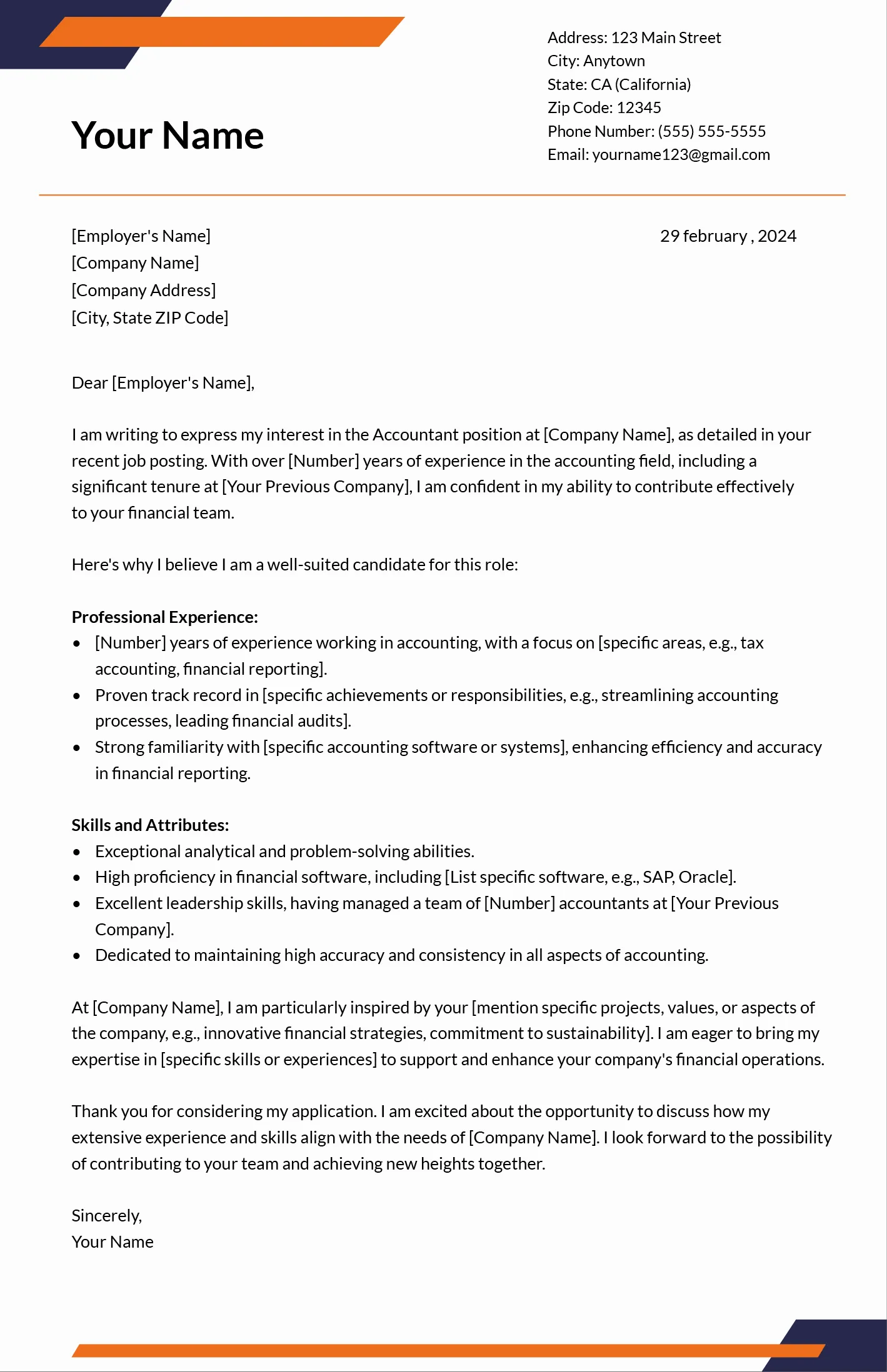
The main body of your cover letter should highlight your relevant skills and experience. Focus on the skills and experiences that align with the job description. Use specific examples to illustrate your accomplishments. Quantify your achievements whenever possible. Demonstrate how you have used your skills to achieve results. By providing concrete examples, you demonstrate the value you bring to the company. Emphasize your expertise in areas like financial reporting, budgeting, tax preparation, and auditing. Show your abilities and what makes you stand out. Do not just list responsibilities, but highlight the impact you made in previous roles. Use keywords from the job description.
Quantify Your Achievements
To make your cover letter more impactful, quantify your achievements. Use numbers, percentages, and specific data to demonstrate your accomplishments. For example, instead of saying “Improved efficiency,” you could say “Improved the efficiency of the accounts payable process by 15%.” Quantifying your achievements makes your accomplishments more credible and shows the tangible results you have delivered in the past. It gives the hiring manager a clear understanding of the value you can bring to their organization. Use numbers to demonstrate your expertise in previous roles.
Tailoring Your Cover Letter
Always tailor your cover letter to the specific job and company you are applying for. Review the job description carefully and identify the key skills and qualifications the employer is seeking. Highlight the skills and experiences you have that align with these requirements. Research the company and its mission and values, and then demonstrate how your skills and experience align with the organization’s goals. Avoid using a generic cover letter. By tailoring your letter, you show that you have a genuine interest in the position and the company. Customizing the letter shows you put effort into the application.
Showcasing Your Professionalism
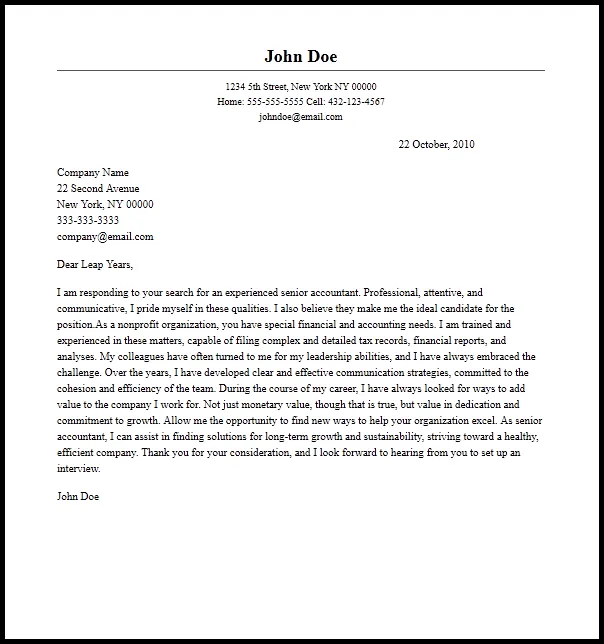
Your cover letter should project professionalism throughout. Maintain a professional tone and use correct grammar, spelling, and punctuation. Avoid slang, jargon, and overly casual language. The overall tone must be positive, respectful, and confident. Demonstrate your knowledge of accounting principles and industry best practices. Your attention to detail and polished writing skills will impress the hiring manager. Make sure your cover letter is a reflection of your professional standards.
Demonstrating Enthusiasm
Express your enthusiasm for the position and the company in your cover letter. Show that you are genuinely excited about the opportunity. Indicate your interest in the company’s mission and values. Mention specific aspects of the job or company that interest you. Demonstrate your desire to contribute to their success. Avoid generic statements like “I am interested in this position.” Instead, provide specific reasons why you are excited about the opportunity. Your enthusiasm will make you stand out and create a positive impression.
Proofreading and Editing
Proofreading and editing your cover letter is essential. Errors in grammar, spelling, or punctuation can create a negative impression. Carefully read your cover letter multiple times. Use a spell checker and grammar checker. Ask someone else to review your letter. Ensuring your cover letter is free of errors demonstrates your attention to detail and professionalism. Every mistake can lead to your application being rejected. Proofreading enhances your image.
Call to Action and Closing
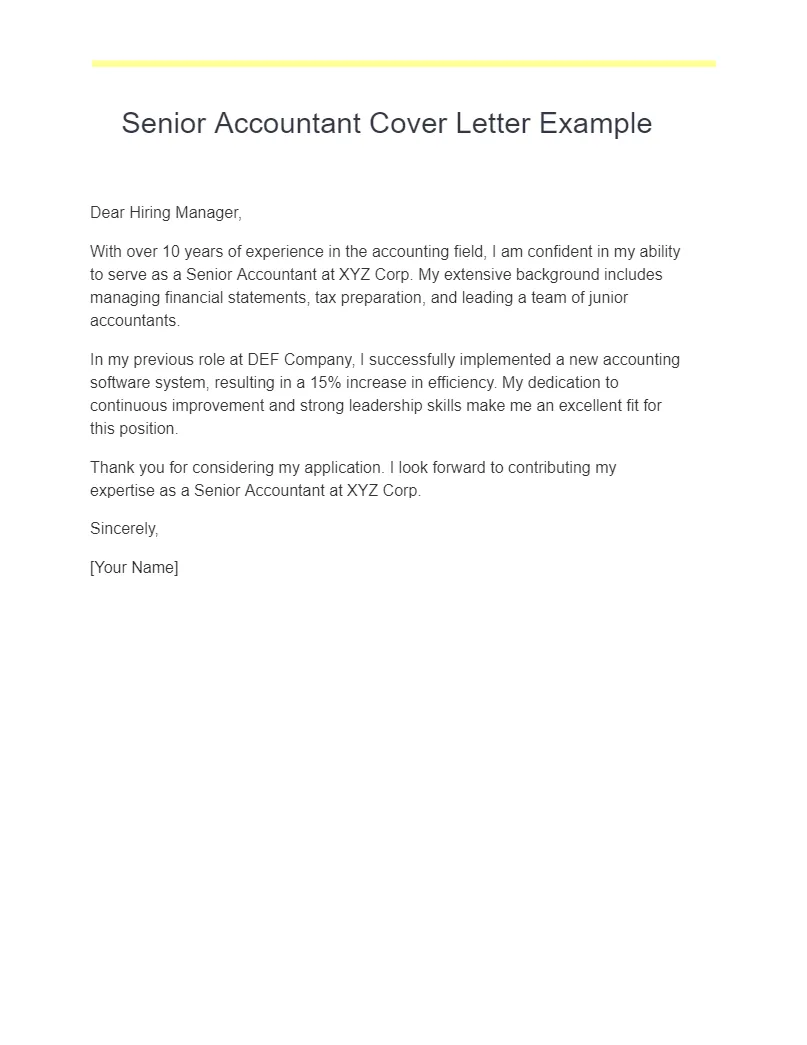
In your closing paragraph, include a call to action. Reiterate your interest in the position and express your eagerness to discuss your qualifications in an interview. Thank the employer for their time and consideration. Include a professional closing, such as “Sincerely” or “Best regards.” Provide a signature after your closing, and include your typed name below. This reinforces your commitment to the opportunity and makes it easy for the employer to take the next step. Clearly express that you are available for an interview.
Formatting Your Cover Letter
The format of your cover letter plays a crucial role in making a positive impression. Use a professional and easy-to-read format. Use a standard font and maintain consistent spacing. Ensure your formatting is neat and organized. Proper formatting is key to readability. A well-formatted cover letter shows that you pay attention to detail and are capable of producing professional documents. Formatting reflects your commitment to excellence.
Choosing the Right Font
Choose a professional and easy-to-read font for your cover letter. Popular font choices include Times New Roman, Arial, Calibri, and Helvetica. Use a font size between 10 and 12 points. Avoid using overly ornate or unusual fonts, as they can be difficult to read. The font should be consistent throughout the document. Your goal is to make it easy for the reader to focus on the content. Clear font is easy on the eyes.
Using Proper Margins and Spacing
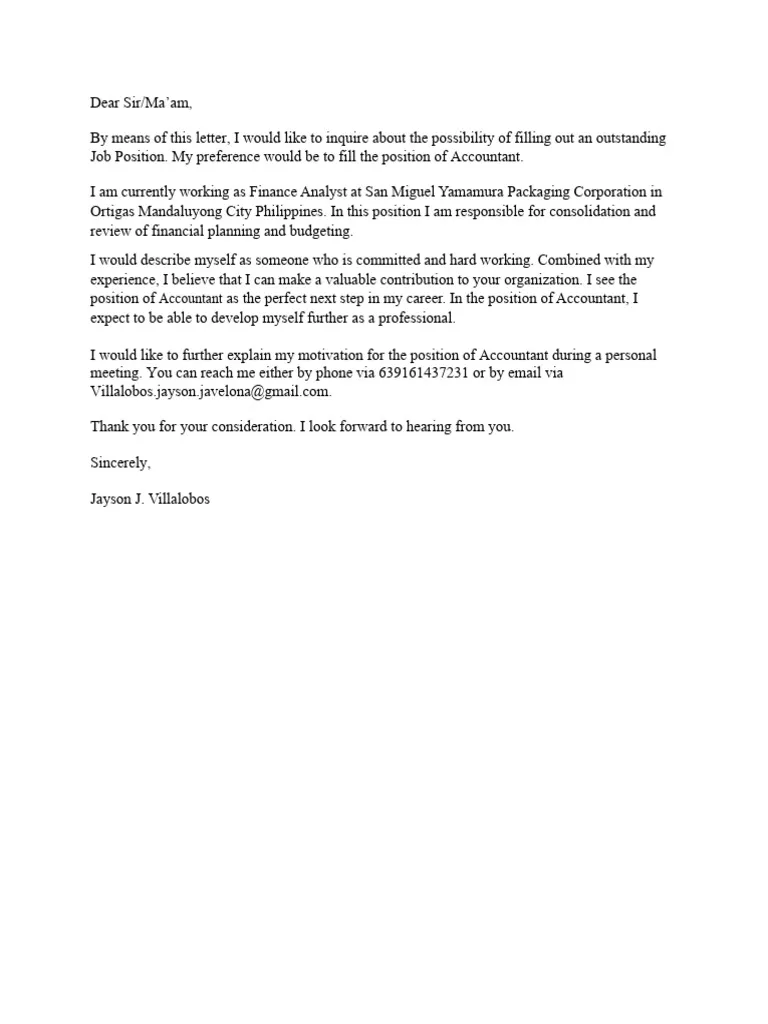
Use standard margins (1 inch on all sides) for your cover letter. Use single spacing within paragraphs and double spacing between paragraphs. Properly formatted margins and spacing enhance readability and give your cover letter a clean and professional look. Ensure that the document is not crowded. Proper spacing and margins will ensure that your cover letter is clear and easy to read. Proper formatting improves readability.
Avoiding Common Mistakes
Avoid common mistakes to enhance your chances of success. Make sure you are using the correct company name and job title. Avoid generic cover letters. Always tailor the letter to the specific job and company. Avoid using jargon or technical terms that the hiring manager might not understand. Do not include information that is irrelevant to the job. Always proofread to eliminate any errors. Avoid negative language and focus on your accomplishments. By avoiding these mistakes, you will enhance your chances of creating a compelling cover letter and making a positive first impression.
